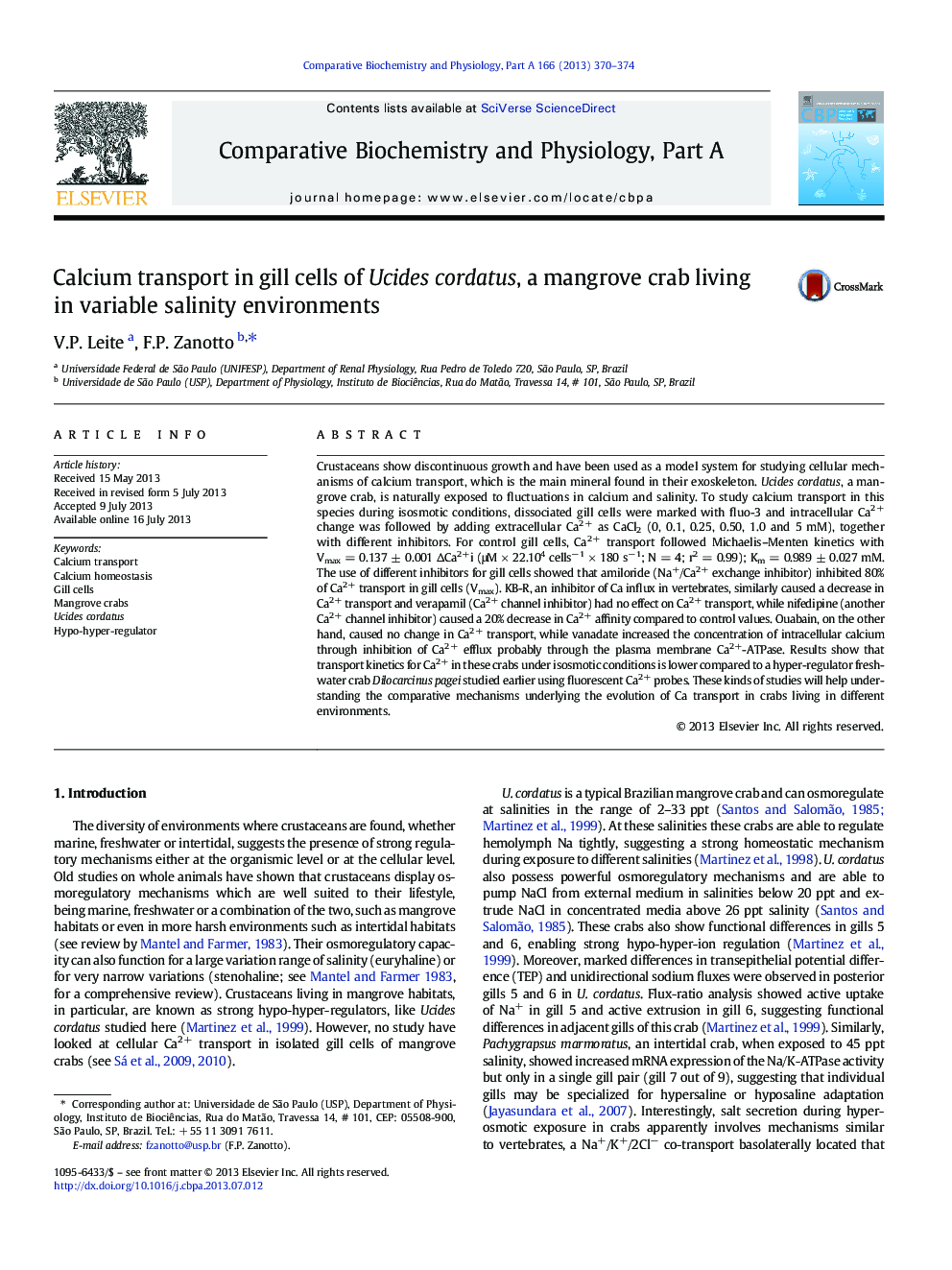| Article ID | Journal | Published Year | Pages | File Type |
|---|---|---|---|---|
| 10818826 | Comparative Biochemistry and Physiology Part A: Molecular & Integrative Physiology | 2013 | 5 Pages |
Abstract
Crustaceans show discontinuous growth and have been used as a model system for studying cellular mechanisms of calcium transport, which is the main mineral found in their exoskeleton. Ucides cordatus, a mangrove crab, is naturally exposed to fluctuations in calcium and salinity. To study calcium transport in this species during isosmotic conditions, dissociated gill cells were marked with fluo-3 and intracellular Ca2 + change was followed by adding extracellular Ca2 + as CaCl2 (0, 0.1, 0.25, 0.50, 1.0 and 5 mM), together with different inhibitors. For control gill cells, Ca2 + transport followed Michaelis-Menten kinetics with Vmax = 0.137 ± 0.001 âCa2 +i (μM Ã 22.104 cellsâ 1 Ã 180 sâ 1; N = 4; r2 = 0.99); Km = 0.989 ± 0.027 mM. The use of different inhibitors for gill cells showed that amiloride (Na+/Ca2 + exchange inhibitor) inhibited 80% of Ca2 + transport in gill cells (Vmax). KB-R, an inhibitor of Ca influx in vertebrates, similarly caused a decrease in Ca2 + transport and verapamil (Ca2 + channel inhibitor) had no effect on Ca2 + transport, while nifedipine (another Ca2 + channel inhibitor) caused a 20% decrease in Ca2 + affinity compared to control values. Ouabain, on the other hand, caused no change in Ca2 + transport, while vanadate increased the concentration of intracellular calcium through inhibition of Ca2 + efflux probably through the plasma membrane Ca2 +-ATPase. Results show that transport kinetics for Ca2 + in these crabs under isosmotic conditions is lower compared to a hyper-regulator freshwater crab Dilocarcinus pagei studied earlier using fluorescent Ca2 + probes. These kinds of studies will help understanding the comparative mechanisms underlying the evolution of Ca transport in crabs living in different environments.
Related Topics
Life Sciences
Biochemistry, Genetics and Molecular Biology
Biochemistry
Authors
V.P. Leite, F.P. Zanotto,
